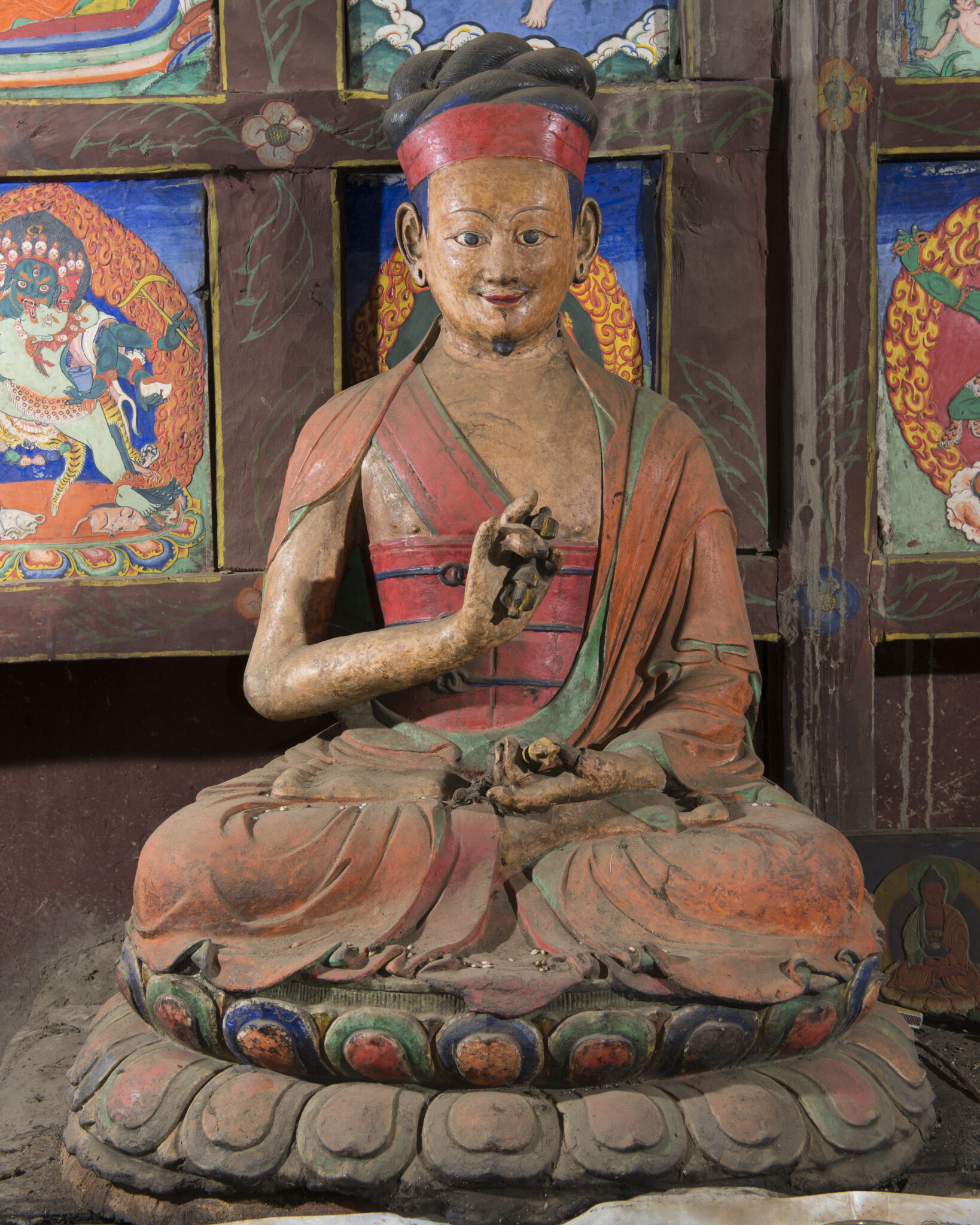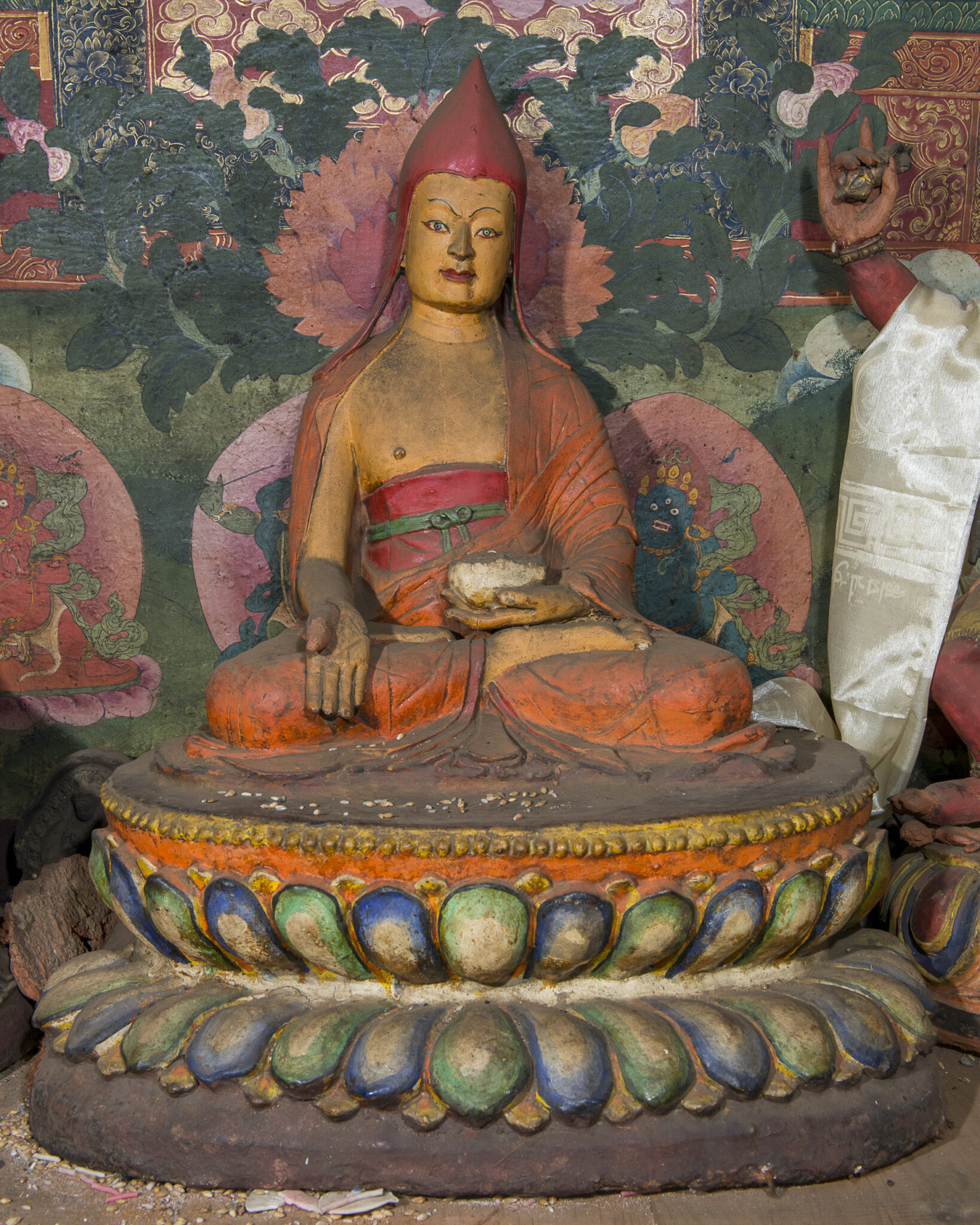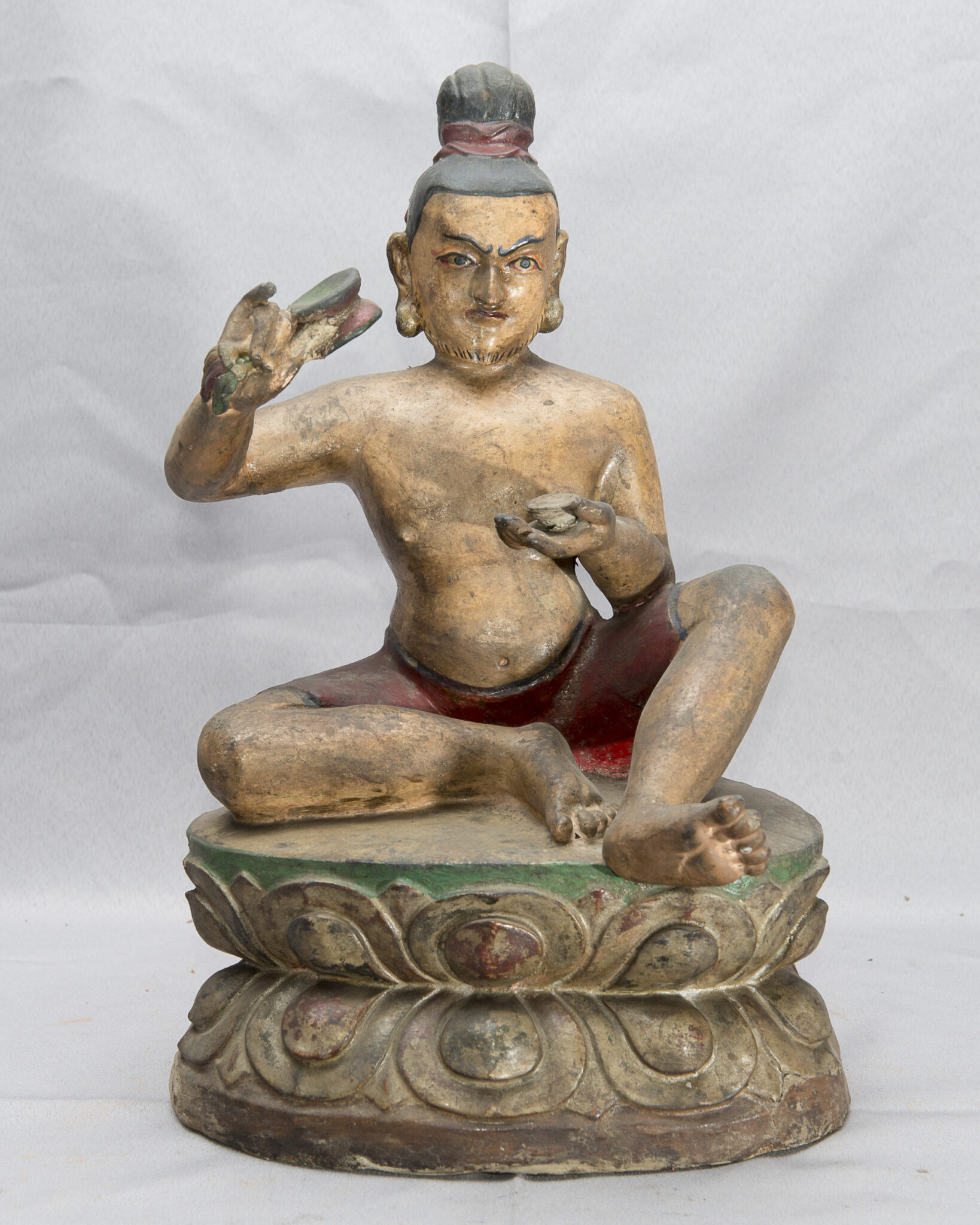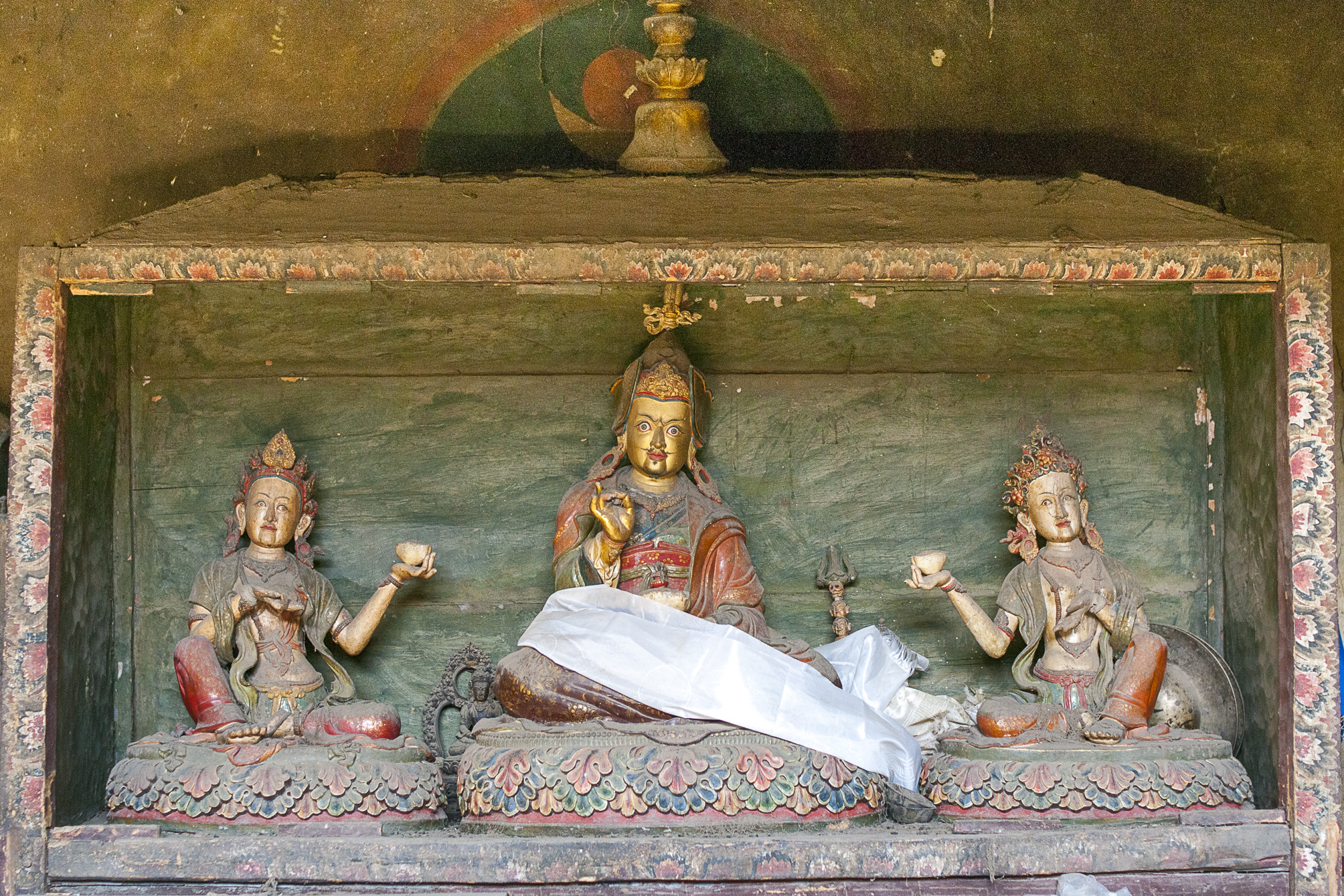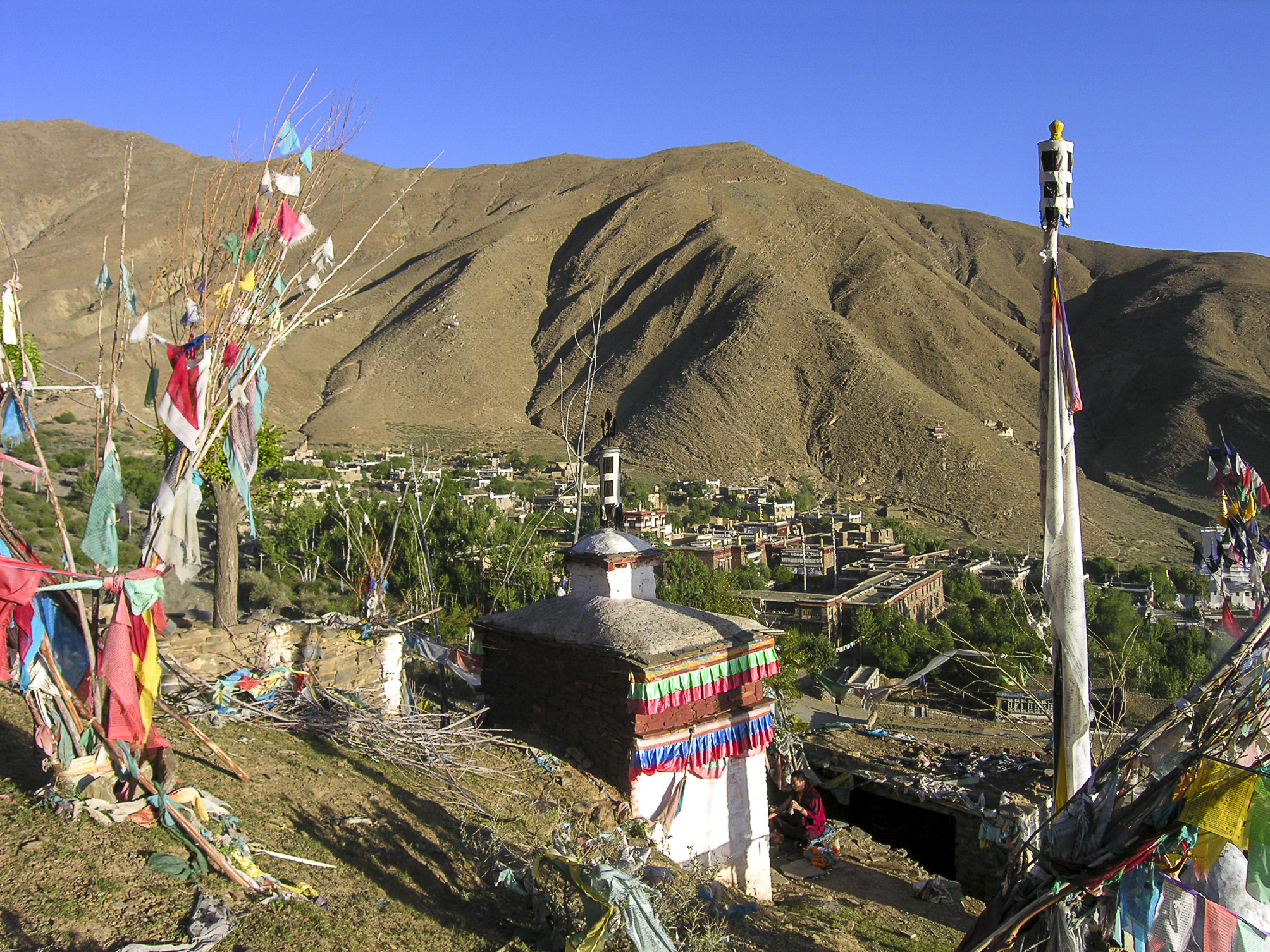Summary
Tibet is world-famous for its metal sculptures, but statues made of clay and papier-mâché were just as common. Art historian Christian Luczanits introduces the papier-mâché statues of Lo Gekhar monastery in Mustang, and the visual convention representing seventeenth-century master Ngadak Puntsok Rigdzin whose image is found there. While Lo Gekhar is said to have been founded in the eighth century by the great Guru Rinpoche, the statues date to the seventeenth-century spread of the Nyingma tradition
Key Terms
monastery
A monastery is a place where monks live, study, and perform ritual. It includes temples and other structures. Monasteries are central to Buddhism, and are also important in Bon, Hinduism, and Daoism. In Himalayan, Tibetan, and Inner Asian areas, some monasteries are enormous, wealthy, and powerful institutions, with branches of satellite monasteries forming networks across regions, often with thousands of monks, many decorated chapels, and huge holdings of land. Other monasteries, called hermitages, can be extremely simple, little more than a cave where hermits meditate. Generally, a Tibetan Buddhist monastery will have an assembly hall, several temples (Tib. lhakhang) for worship of specific deities, a protector chapel, as well as monks’ accommodations. A related institution in Newar Buddhism are the baha and bahi.
The Nyingma are a tradition of Tibetan Buddhism. The Nyingma trace their lineages back to the first introduction of Buddhism into the Himalayas in the time of the Tibetan Empire, most importantly to the legendary Indian yogin Padmasambhava. The Nyingma are known for their “treasure revealers” (Tib. terton), lamas who travel the Himalayas, revealing ritual texts, objects, and hidden lands thought to be concealed within the Tibetan landscape. The Nyingma are also famed for the Dzogchen teachings, a set of meditative practices focused on the bardo states, and the nature of the mind as pure, self-arising consciousness. Unlike other Buddhist traditions, many Nyingma practitioners are not celibate and can marry, raise families, and grant Vajrayana initiations and teachings to their children.
The Nyingma tradition of Tibetan Buddhism holds that gurus of the past like Padmasambhava concealed texts, objects, and even hidden lands (Tib. beyul) throughout the Himalayan landscape, meant for later generations to discover at the time the teachings are needed. Tantric practitioners and yogis who discover these treasures are called terton, or “treasure revealers.” Treasure revealers can also uncover “mind-treasures,” revealed to them by deities or lineage masters in dreams and visions. There are treasure-revealers in the Bon tradition as well.
Tibetan Buddhism
Historically, Tibetan Buddhism refers to those Buddhist traditions that use Tibetan as a ritual language. It is practiced in Tibet, Mongolia, Bhutan, Ladakh, and among certain groups in Nepal, China, and Russia and has an international following. Buddhism was introduced to Tibet in two waves, first when rulers of the Tibetan Empire (seventh to ninth centuries CE), embraced the Buddhist faith as their state religion, and during the second diffusion (late tenth through thirteenth centuries), when monks and translators brought in Buddhist culture from India, Nepal, and Central Asia. As a result, the entire Buddhist canon was translated into Tibetan, and monasteries grew to become centers of intellectual, cultural, and political power. From the end of the twelfth century, Tibetans were exporting their own Buddhist traditions abroad. Tibetan Buddhism integrates Mahayana teachings with the esoteric practices of Vajrayana, and includes those developed in Tibet, such as Dzogchen, as well as indigenous Tibetan religious practices focused on local gods. Historically major traditions of Tibetan Buddhism are Nyingma, Kagyu, Sakya, and Geluk.
Tibetan script
The Tibetan script is used to write the Tibetan language, as well as several other smaller Himalayan languages. Based on the Brahmi script used in the Gupta Empire in India, the Tibetan script was developed under the Tibetan Empire in the seventh century and is credited to minister Tonmi Sambhota (b. 619?). Two important forms of the Tibetan script are “Uchen” (Tib. “having a head”), a standard type used in printed texts, and “Umey” (Tib. “headless”), a cursive form sometimes used in manuscripts. There are many other cursive and decorative forms of the script.
